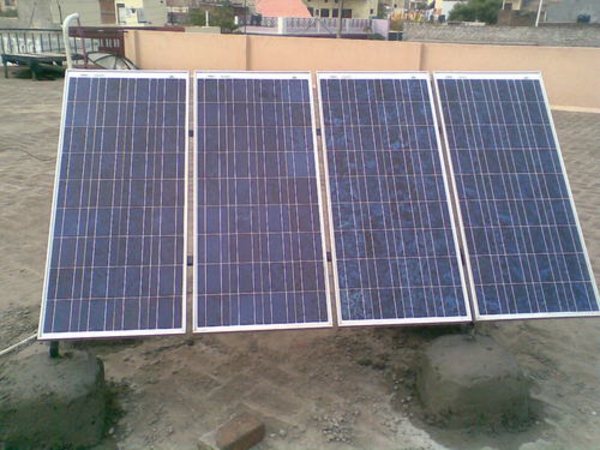A solar Inverter is also known as a PV inverter or a photovoltaic inverter. These are used to convert the variable output of a solar panel, which is a direct current, to a utility frequency alternating current that can be fed directly to either a commercial energy grid or a private energy grid. The solar inverter is a crucial component of photovoltaic system and allows the use of ordinary commercial appliances. Photovoltaic Arrays use the special functions of solar inverters such as “maximum power point tracking” (MPPT) and “anti-islanding” protection. Maximum power point tracking allows the solar inverter to gain the maximum amount of power available from a photovoltaic array. This is a complex system which works on solar irradiation, temperature and total resistance and produces a non-linear output efficiency which is also known as the I-V curve. The MPPT system samples the energy output from the cells to determine the best resistance to use in any given environmental condition. This allows the inverter to define the amount of current to draw from the PV to gain the maximum amount of power output. Anti-Islanding is when a distributed generator can detect that there is no power coming from the grid and stops producing power accordingly.

The Three Basic Types of Solar Inverters
There are three different types of Solar Inverters and these are Stand Alone Inverters, Grid Tie Inverters and Battery Backup Inverters. Stand Alone Inverters are used in an isolated system and the inverter takes power from batteries which are charged by photovoltaic arrays and supply DC power. These usually also incorporate a battery charger which will draw power from an AC power supply as and when available. These usually do not interfere with the power grid in any way so are not generally required to have anti-islanding protection. A Grid Tie Inverter is designed to shut down automatically when power is lost from the utility supply. They are not designed to supply power in event of power loss so are not a backup system. The third type, Battery Backup Inverter, is designed to draw energy from a battery. They also manage the recharging of the battery using an on board charger and they export excess energy back to the power grid. These inverters are designed to supply AC power energy in the event of a power outage and as a result do required to have Anti-Islanding protection.
So What Does an Inverter Actually Do?
With solar power or any other type of renewable energy, the key factor is the amount of return you get. In the case of Solar Power, this is how much energy can you transform to electricity from solar energy. With current technology the photovoltaic cells are not massively efficient by themselves. With using new technology and materials such as thin films, organic polymers, layered semiconductors and phosphorescent dyes or even better designs, the efficiency can be improved. But until this happens it is down to the inverters themselves to increase efficiency to make solar power and viable alternative to fossil fuels. The main function of the inverter is to change the power collected from the photovoltaic cells which is DC (Direct Current) to a AC (Alternating Current), so that is can be used by existing machines and networks. This process is commonly referred to as “Inversion”, as it reverse the more common process of converting AC to DC power which is what battery chargers commonly do for example. A modern inverter though does much more than this as it also gauges how much current it can draw from the system in order to maximize the solar panels power output, which all in all is a very complicated system.
Summary
A Solar Inverter is an extremely complicated piece of technology, which is used to manage multiple problems. Some of these problems include Electrical mismatches, partial shading of the panels and temperature fluctuations, to name but a few. One thing is for certain, without this technology, solar power would never be efficient enough to make it as popular as it is today.
This article was written by Misty Angel on behalf of AVIC Renewable Energy Pty Ltd. AVIC Renewable Energy are a leading supplier of solar panels in Sydney and worldwide. AVIC also rank 250th in the Global Top 500 largest corporations in 2012. Misty is a keen blogger on technology and green issues and is always looking for ways to help maintain the planet and reduce his carbon footprint.
What Is A Solar Inverter?

